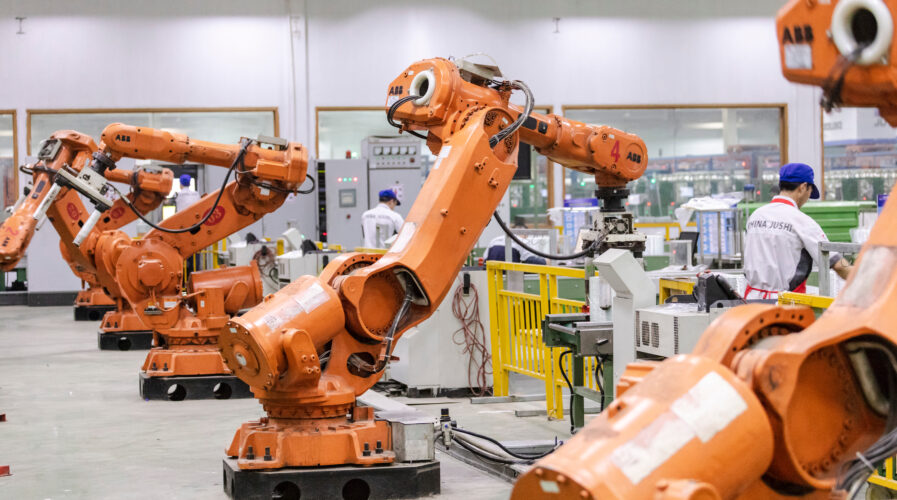
(Source – Shutterstock)
Simplifying automation adoption for Southeast Asian enterprises
The adoption of automation in Southeast Asia has increased rapidly due to the changes in the workplace brought upon by the pandemic. In fact, most organizations in the region have increased automation adoption for most of their tasks today.
Despite this, a recent report by Deloitte showed that South Asian countries are the least prepared in the APAC region for the upcoming challenges of workplace automation. Interestingly, Australia and Singapore were best set up for the automated future. While the adoption in other Southeast Asian countries has been positive, there are still some teething issues that need to be solved.
As such, to understand more about how businesses can make the most out of the automation technologies available to them, Tech Wire Asia speaks to Irene Hwa, Senior Director of Field Marketing for the Asia Pacific and Japan at Kofax.
Can you share with us the state of automation adoption in Southeast Asia and the biggest challenges businesses face in adopting them?

Irene Hwa, Senior Director of Field Marketing for Asia Pacific and Japan at Kofax
Southeast Asia’s rapid uptake in digital technologies and automation is opening a range of opportunities for businesses today. Singapore is leading the region in IT spending, which is ramping up digital efforts to boost the competitiveness of businesses in the country and the rest of Southeast Asia.
Having said that, the digitization of Southeast Asia’s economy in the past two years has been experienced unevenly, especially for SMEs. The OECD found a significant digitalization gap between SMEs and more advanced firms in the region, highlighting the need for efficient resource allocation to boost adoption.
For businesses to strengthen automation adoption, they need to overcome barriers such as budget allocation for automation projects and upskilling employees to work alongside the digital workforce. With more qualified resources to maximize project delivery and quality, automation will be a key enabler in promoting opportunities for long-term growth and employee satisfaction.
Workplace automation tools are becoming increasingly critical in streamlining workflows and enhancing operations with the progression of AI and ML technologies. Governments can effectively mobilize resources and cultivate a digital-first strategy among local talent and businesses for wider adoption of AI automation across all sectors.
When it comes to intelligent automation, how different are the solutions by Kofax compared to all the services provided by other vendors as well?
Industry analysts are increasingly focusing their attention on intelligent automation in the assessment of the RPA market, and Kofax has established a leadership position in this emerging space. Kofax pioneered and remains a leading provider of intelligent automation platforms, where RPA is just one of many integrated technologies needed for true end-to-end automation.
With advances in AI, ML, and low-code, Kofax looked beyond RPA and knows true end-to-end digital transformation can be achieved using technologies like artificial intelligence, optical character recognition, process orchestration, and machine learning through an integrated intelligence automation platform.
Why does Kofax feels they have a huge market opportunity in this region? Which industries are Kofax looking to focus on?
In the Asia Pacific region, Kofax has thousands of customers of all sizes and our priority has been on banking and finances given the company’s history and the nature of its solutions. However, over the years we have gained more customers in retail, manufacturing, and government as we expand our intelligent automation solutions. As the company grows and attracts organizations worldwide, out of our 25,000 customers, roughly 20% originate from the APJ region.
BFSI continues to be the leading vertical in driving business automation. We are also seeing accelerating interest in the government, healthcare, logistics, and retail sector with more automation projects. APJ is at a spur of growth in business workflow automation.
How will the acquisition of Tungsten enhance Kofax’s automation offering portfolio? Will Tungsten be integrated into other existing products as well?
Kofax automates over 60 million invoices for more than 11,000 organizations worldwide. The acquisition of Tungsten will expand Kofax’s invoice processing and accounts payable automation solutions by adding eInvoicing, compliance, and critical go-forward capabilities in the AP Automation space. As regulators put in place mandates for e-invoicing, technology that allows them to navigate this complex landscape becomes increasingly valuable in remaining efficient and avoiding liability. Tungsten and Kofax’s combined capabilities provide a comprehensive, future-proof means to support organizations at every step along the journey to true e-invoicing.
Lastly, can you also share with us Kofax’s role in the recently announced UK-Singapore Digital Economy Agreement?
Kofax echoes the UKSDEA’s entry into force that reflects the UK’s and Singapore’s pledge to facilitate new growth opportunities for Singapore businesses in the digital economy. Paper-based legacy processes have led to an inefficient repetition of the digitization, extraction, and validation process in the administration of common documents – and lag behind the times from modern digital means of establishing trust through end-to-end digital trade such as safe and secure e-payments and paperless trading. Kofax is excited about the potential for businesses to take digitization to the next level and encourage participation in the digital economy.
READ MORE
- Strategies for Democratizing GenAI
- The criticality of endpoint management in cybersecurity and operations
- Ethical AI: The renewed importance of safeguarding data and customer privacy in Generative AI applications
- How Japan balances AI-driven opportunities with cybersecurity needs
- Deploying SASE: Benchmarking your approach


